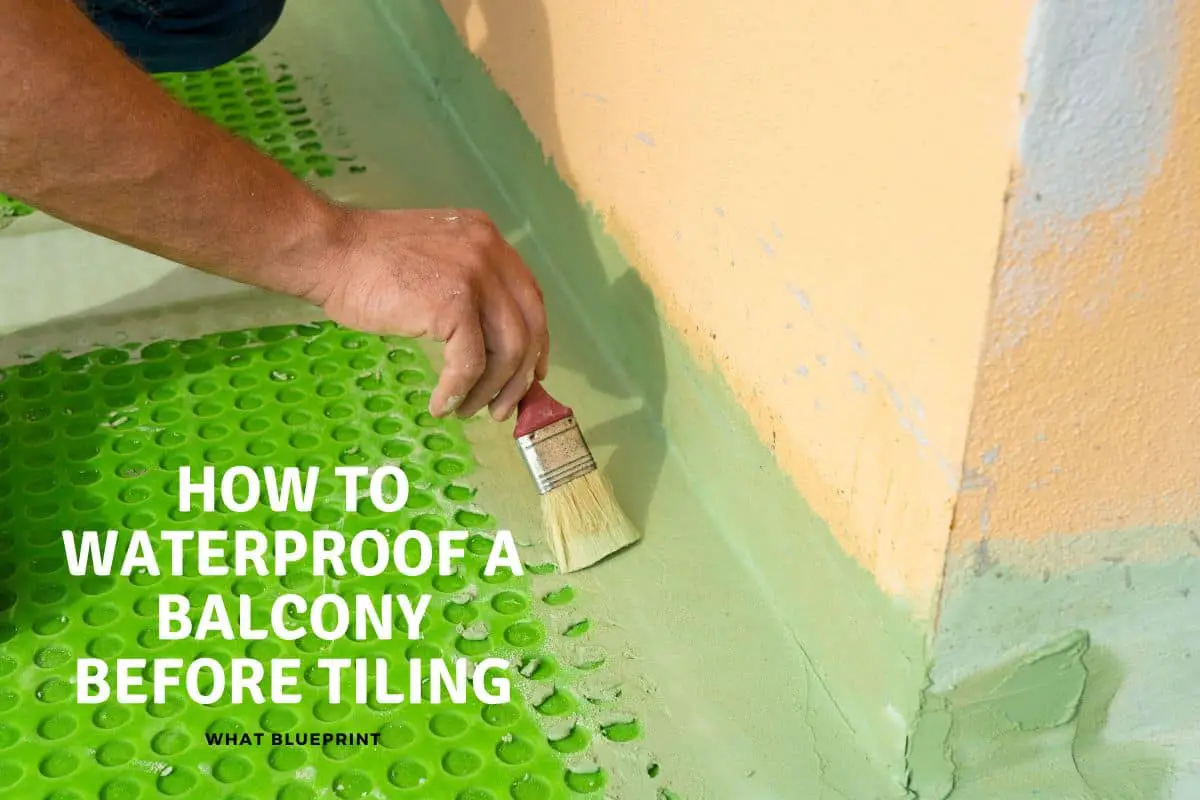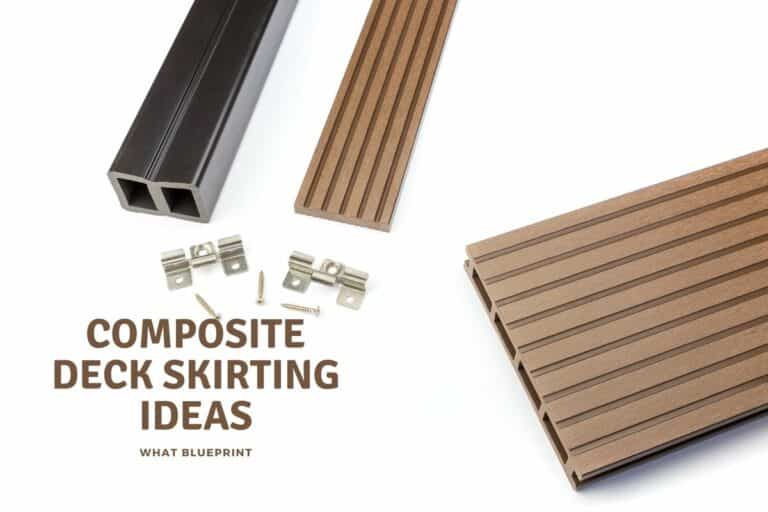How to Waterproof a Balcony Before Tiling
If you’re planning to install tiling on a balcony, you should first consider the waterproofing system to use. This membrane will protect your balcony from water ingress over time, but it’s important to protect and install it properly first. We take a look at the various waterproofing systems available.
Steps to effectively waterproof balconies include ensuring level surfaces to help with drainage, cleaning the surface of debris to prevent leaks if using bitumen or liquid membranes and filling any holes or cavities before applying or laying waterproofing systems, all help to increase the life of the waterproofing.
Some of these systems are applied over an existing concrete surface, which prevents the need for hacking work and the disposal of debris. Fibre liquids and water-based resins are also available for protecting concrete balconies. We will look at some of the balcony waterproofing options in the article below.
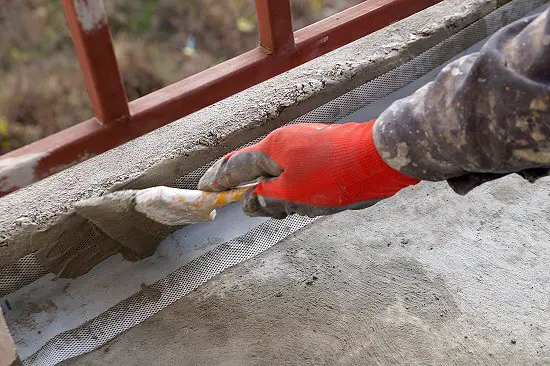
Steps to Take Before Waterproofing a Balcony
To ensure a successful tiling project, the balcony surface should be thoroughly cleaned and prepared for tiling this includes before waterproofing the surfaces.
Before waterproofing, it is important to repair any holes or cracks in the concrete or wooden substrate.
High-quality water-resistant acrylic caulk should be used to repair these defects, and the repaired area should be sanded to make it flush with the surrounding surface.
If the balcony surface is made of wood, repair any joint, nail or screw heads, and any protrusions. After repairing these defects, allow the caulking to dry. At that point you can start to consider the materials you can use to waterproof your balcony.
Bituminous Membranes for Waterproofing a Balcony
Using bituminous membranes to waterproof a patio or balcony before tiling can be an effective way to protect the surface from water damage.
The simplest method is to install a prefabricated roll of bitumen. Bitumen membranes are composed of asphalt and polymers and may include mineral stabilizers.
Depending on the material used, bitumen may be reinforced with fiberglass or polyester. These materials are often coated with a coating or release paper to prevent their migration into the substrate and water penetration.
- The first step is to clean the surface of the balcony and clear any loose debris.
- Next, you should clean the surface with detergent or pressure wash it.
- Once you have removed all the loose debris, you can apply a waterproofing membrane to the balcony.
- Make sure to apply waterproofing tape around railing posts and flashing.
- The waterproofing membrane should be applied in accordance with the manufacturer’s instructions.
There are several types of waterproofing membranes available. The most popular type is the bituminous membrane, which is a continuous layer of water-resistant material that can be applied to a flat balcony.
When applied properly, the waterproofing membrane will protect the structure beneath and provide a protective layer for the balcony.
While the cost of the bituminous membrane varies widely, the quality and effectiveness of the membrane will ensure a safe and long-lasting surface.
While bituminous membranes are generally durable, some are not capable of withstanding the ponding water that may occur on a balcony. This can cause the membrane to fail in its waterproofing function or cause cracks in the joints.
During the waterproofing process, you will notice evidence of failed bitumen on the surface of the tiles and grout lines. This film may be mistaken for calcium salts but is actually a result of the tiles breaking down.
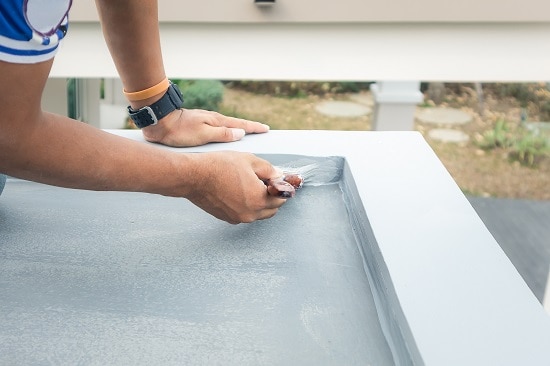
Liquid Membranes For Waterproofing a Balcony
Liquid membranes are another option. These waterproofing membranes are made of polymer-modified asphalt. This type of bitumen is a bit more expensive option, but it offers greater flexibility.
It’s also a bit more flexible, but it’s also highly sensitive to moisture levels in the concrete slab. If the water content in the concrete slab is too high, polyurethane membranes can debond from the substrate and peel off.
Flexible Epoxy Grout
There are several benefits of using flexible epoxy grout before tiling a balcony.
- First of all, it will prevent dirt from building up and will prevent water from penetrating into the grout. This way, you won’t need to worry about mould and mildew and the grout won’t need to be cleaned as often.
- Second, it will prevent your tiles from staining as easily. A dark gray epoxy grout won’t show urine stain. From dogs or cats not you!, or dirt very easily.
- Another great advantage to using flexible epoxy grout to waterproof a balcony before a tiling job is that its stronger and more resistant. While it’s more difficult to apply, it won’t crack or chip away.
A second benefit of using flexible epoxy grout is that it doesn’t require additional sealing, which is a good thing in wet areas. This is a huge benefit, especially if the balcony isn’t very high-traffic and sheltered more from the weather than some balconies.
When waterproofing a balcony before tiling, you should avoid using wood base layers, or foundation layers. This is because tiles can’t be laid on wood that’s exposed to the weather.
Wood will expand and contract when the temperature changes or it rains, breaking the bond between the tile and the balcony surface. This can be expensive fix.
Although it may seem common sense to not include porous materials when laying tiles, and waterproofing, it has been done and we just wanted to give you a heads up. If you want wood on your balcony keep it to surface decking.
That’s why a waterproofing membrane is an important part of the project.
A Note on Grout for Waterproofing
When choosing a grout for your tiles, remember that quality is important. High-quality grouts resist fading and are UV resistant.
When choosing your grout, think about how you will use the space. Bathrooms and showers are subject to wet and humid conditions, but balconies experience extreme temperatures, weather and humidity.
This means you’ll need a grout that can withstand moisture and protect your tiles from leaks. A great one used commonly is XXXXX
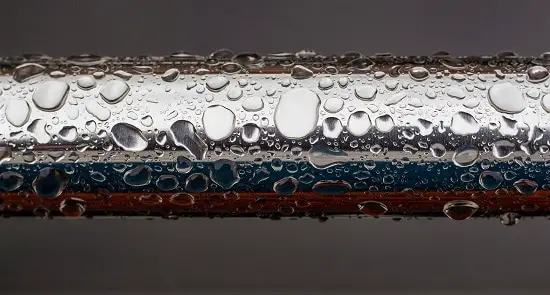
Preventing Efflorescence on Balconies
Tiled balconies may be susceptible to efflorescence, a white crystalline streak that occurs when water seeps through the masonry surface. The water dissolves the salts present in the masonry and moves through it, carrying the minerals with it.
As the water evaporates, the salts are left behind, forming streaks of white crystalline material. These streaks can become so large that they split apart the surface of the masonry and create cracks.
The water in the water path draws out the salts in the cement-based materials. This moisture evaporates quickly, leaving behind a white residue.
Efflorescence can appear on a horizontal surface or a vertical surface. The first step is to clean the area with an appropriate chemical solution. If Efflorescence is still visible after the solution, a mild acid solution can be applied to the surface.
During the installation process, a vapor barrier must be placed under the concrete slab. During the process, water vapors will be drawn upwards from the concrete. As a result, efflorescence is likely to appear.
A thorough investigation of the cause of efflorescence must be performed. While efflorescence is a common occurrence, it is still important to try to avoid or limit it.
Efflorescence is an unwanted symptom of an improper waterproofing system. The occurrence of efflorescence may indicate that the waterproofing is not effective, or that the tiling system is not performing as designed.
Experts advise that efflorescence be prevented or minimised by using appropriate materials. Chemical fixes may be available, but they are not as effective as physical solutions.
Efflorescence is a fungus-causing a variety of problems. The first step in preventing efflorescence is to clean it properly. You can use a scraper or hose to remove light efflorescence, while more stubborn efflorescence should be removed by a cleaning contractor.
The cleaning contractor may use acid to soften the efflorescence formations. However, it is important to use a cleaner that contains appropriate cleaning agents for various types of tiles to avoid unwanted damage.
Choosing a Waterproofing System
When choosing a waterproofing membrane for a balcony, consider whether the floor is flat and stable, and if the slope is adequate.
Check for cracks before installing a waterproofing system. If the floor is not flat or has too much sloping, it may need to be removed and replaced. If the slope is too steep, the tiles could become unusable due to the lack of drainage.
You can use a pressure washer to clean the surface, and then apply a layer of detergent or soap to prevent water accumulation. Allow to dry for 24 hours.
- Before applying a waterproofing membrane, you must prime the substrate.
- If you’re using a sheet membrane, you must prime the surface beforehand.
- If you’re using a liquid membrane, you can apply it directly on the surface.
If you’re choosing a tile adhesive for a balcony, make sure you read the instructions carefully. You’ll want to make sure that the waterproofing system adheres properly to the tile.
Conclusion
A waterproofing system is necessary for your balcony, so don’t skip this step! It’s best to waterproof your balcony before you start tiling. Make sure to prepare the surface thoroughly so that the waterproofing membrane sticks properly.
After waterproofing, the membrane should be tested to make sure it’s completely waterproof. If it’s not, you may have to spend money fixing problems that can cost you thousands of dollars.

